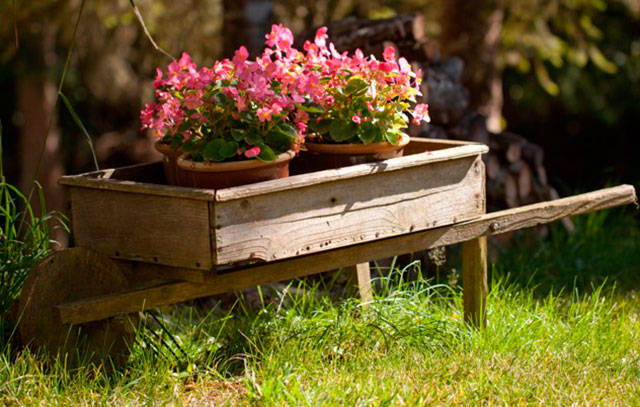Ornamentals and edibles are in their glory during August. Drier weather is here and cooler temperatures are around the corner. Think about which plants to start now for fall and winter harvests.
Assess
Stroll around the garden. What worked well? Is it time for additions or changes? Snap pictures with your cell phone. Write notes in your garden journal. What do you want to order or buy for next year? Consider design aspects to maximize plant health. Locate the right plant in the right place. For a small fee you can test soil from your garden and flower beds. Clallam County Conservation District, explains how to submit soil samples. Study the reports. If amendments are needed, implement them for next year. Remember, too, weeds going to seed will remain in the soil over winter and return in spring
Water
If you are planning vacation, enlist friends to help water. Timers on soaker hoses are a wise investment. Ensure that irrigation systems are in good repair. Over-watering damages root structure. Allow soil surface to dry before watering again. Mulching will help retains moisture. Containers and hanging baskets need frequent watering which may increase nutrient loss. Consider fertilizing containerized plants bi-weekly.
Vegetables
Harvest tomatoes, beans, and summer squash. Tomatoes need constant, moderate watering, letting soil dry between watering. Sun and air circulation around plants reduces opportunities for mildew. Compost or till under spent crops as they occur. Onions need a dry place to cure for about two weeks before storing.
In early August, plant new seeds for lettuce, scallions, peas, radishes and spinach directly into the soil. Plant seeds deeper than in spring to adjust for lower moisture levels. Mulch to keep soil moist and protect from early frost. Transplant seedlings for cauliflower, broccoli, cabbage, beets, kohlrabi and kale, since they take longer to mature.
Berries
Use netting to keep birds away. Mulch maintains moisture and keeps soil warm from cooler evening temperatures. Morning watering promotes plant health by keeping leaves dry and roots nourished.
Annuals, perennials
Deadheading spent blooms encourages continuous blooming into fall. Perennials flourish in August with adequate moisture. Divide iris every 3-4 years. Separate and replant day lilies. For tubers, rhizomes and corms, cut out parts damaged by boring insects. Replant at surface level. Tops should be visible. Water thoroughly.
Trees, shrubs
Gently shape and remove dead branches on small trees and shrubs. Over-pruning will encourage new growth late in the year, making plants susceptible to damage from freezing. Remove vertical water shoots on apple trees since they will not produce fruit in the future. Pruning cherry and plum trees during late summertime can reduce diseases by removing affected branches and leaves. Delay planting new trees until cooler fall weather. Prune and shape hedges in August since new growth should harden before winter temperatures. Roses continue blooming into the fall if spent flowers are removed. Stop fertilizing roses and woody shrubs by mid August so they will harden off before cooler weather
Lawns
To preserve moisture, set mower blades four inches high. Wait until fall to fertilize. Thatch and aerate to promote root growth. Delay new lawn planting until cooler fall weather . Water lawns deeply once a week. An inch a week is usually sufficient.
Think about preserving or donating edibles you cannot consume. Enjoy drying your hydrangeas and tall grasses indoors during winter months.


